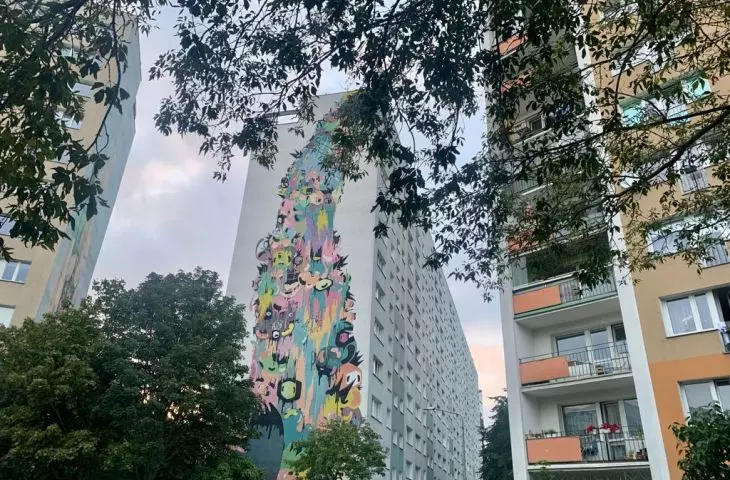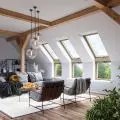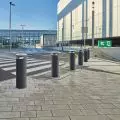Gdansk Zaspa is not only murals, the site of a former airport and monumental blocks of flats that from above are shaped like honeycombs. You can find out about it during the three-day Open House festival. It kicks off on Friday, September 29 this year.
Open House is an event for lovers of architecture, art and design who want to get to know the city better. The festival opens the door to well-designed spaces, and often to places that are inaccessible on a daily basis. The event is part of Open House Worldwide, bringing together 50 cities around the world, including London, Madrid, New York and Stockholm, among others.
perks of a large-panel housing development
This year's sixth edition is unique. For the first time, the organizers have chosen an area that is predominantly a homogeneous, powerful settlement. The Zaspa district developed on the site of the former civil airport, which operated there from 1919-1974. With the closure of the airport, the field was given to urban planners and architects. This is because it was decided to build a housing development for 50,000 residents at the site. The project, selected in a nationwide competition, was prepared by Roman Horodyński, Rudolf Buchalik, Stefan Grochowski, Teresa Opic, Aniela Wilk, Edmund Sergot and Ryszard Musiał.
The estate, although filled with blocks of large slab buildings, has great advantages: there are considerable distances between buildings, plenty of greenery and recreational areas, and services at your fingertips. The layout of the buildings is unusual, as they are hexagonal, or honeycomb-like.
The district is also famous for its monumental painting. Large-panel blocks are decorated with more than 50 murals. In 1980-1988, Lech Walesa lived in Zaspa with his family, and today a mural on the building at 17D Pilotów Street features a photo of the Solidarity leader from his time of internment.
spaces small and large
Not surprisingly, the Open House program in the Gdansk neighborhood promises to be interesting.
- In spaces dominated by echoes of modernism, we will look for stamps of modernity. We will see how newly constructed buildings relate to the architecture that created Zaspa in its most distinctive form. We will look into spaces large and small - from halls and churches to artisan workshops. We will try to look at the murals from a completely non-obvious perspective. We will invite you to places that host dance, painting, ceramics. There will also be about the mundane of life and how much it can inspire. Although we must admit that it is difficult to talk about ordinary everyday life in a place that hosted both a Nobel Prize winner and a pope," the organizers announce.
An exhibition of archival photos, architectural and literary walks, workshops, art installations, meetings, field games are planned. Agata Szydłowska author of the book "Futerał. On furnishing apartments in the People's Republic of Poland" will talk about what made Gdansk apartments so different and so appealing. You will also be able to listen to a lecture by Anna Cymer, an architectural historian, "Hexagons from the airport, or not all blocks are the same."
peek into private apartments
A relic of the communist era, the massive pedestrian bridge over Jana Pawła Avenue and al. Rzeczypospolitej, a sound performance has been planned. The event also involves Zaspian schools, churches and... the iconic Romantica club, which will offer a trip back in time, to a place where not only a red neon sign still remains, but also a wealth of memorabilia and fascinating stories.
But Open House is also famous for inviting people into spaces that are not normally accessible - including private apartments. Visitors will be able to visit, among others, Tomek's apartment on the ninth floor of Zaspa's block of apartments and the apartment of Iwona, an interior designer in an intimate block of apartments that dates back to the very beginnings of Zaspa.
The festival will be held from 29.09 -1.10. this year. A detailed program can be found on the Open House website.














